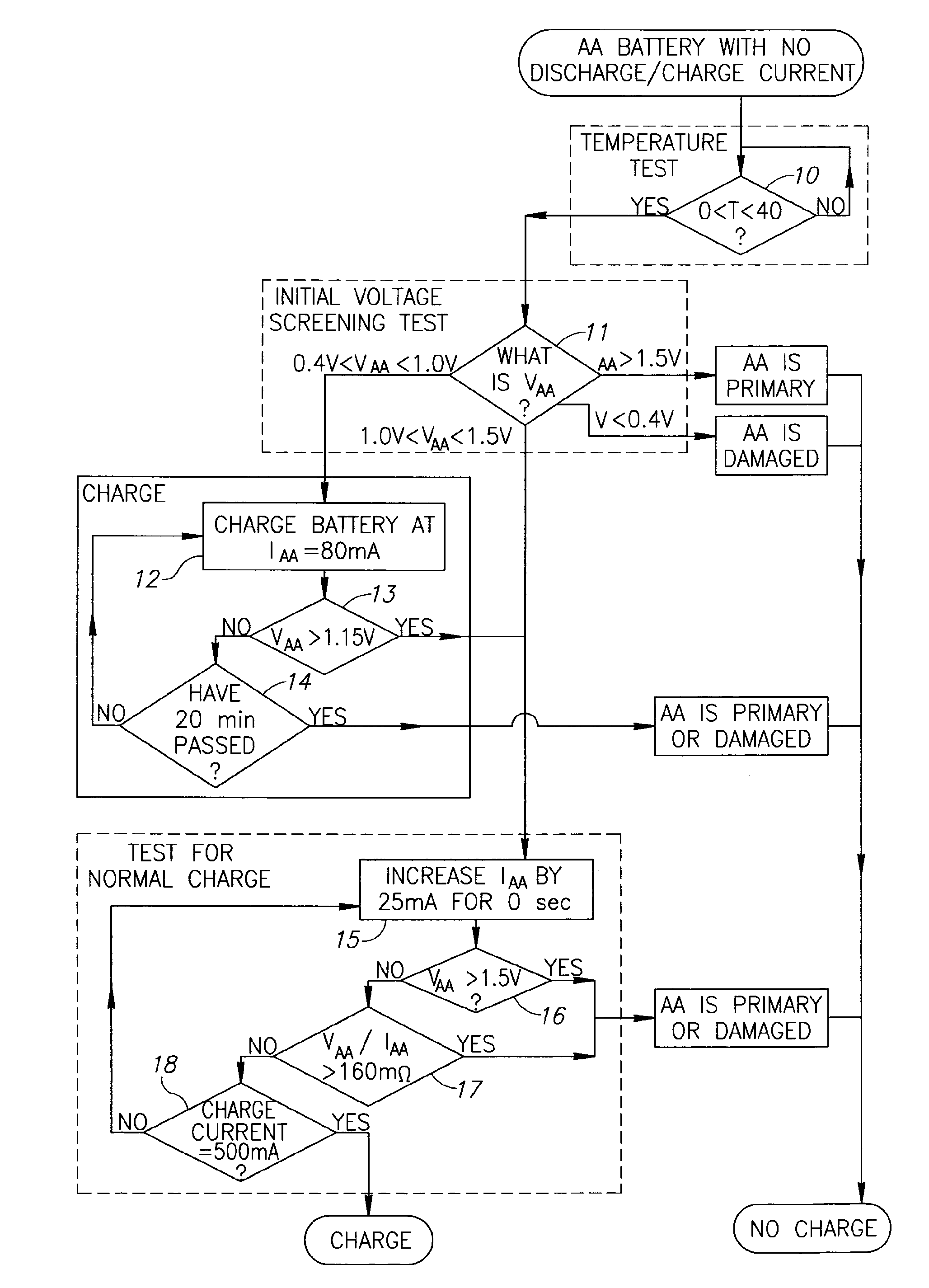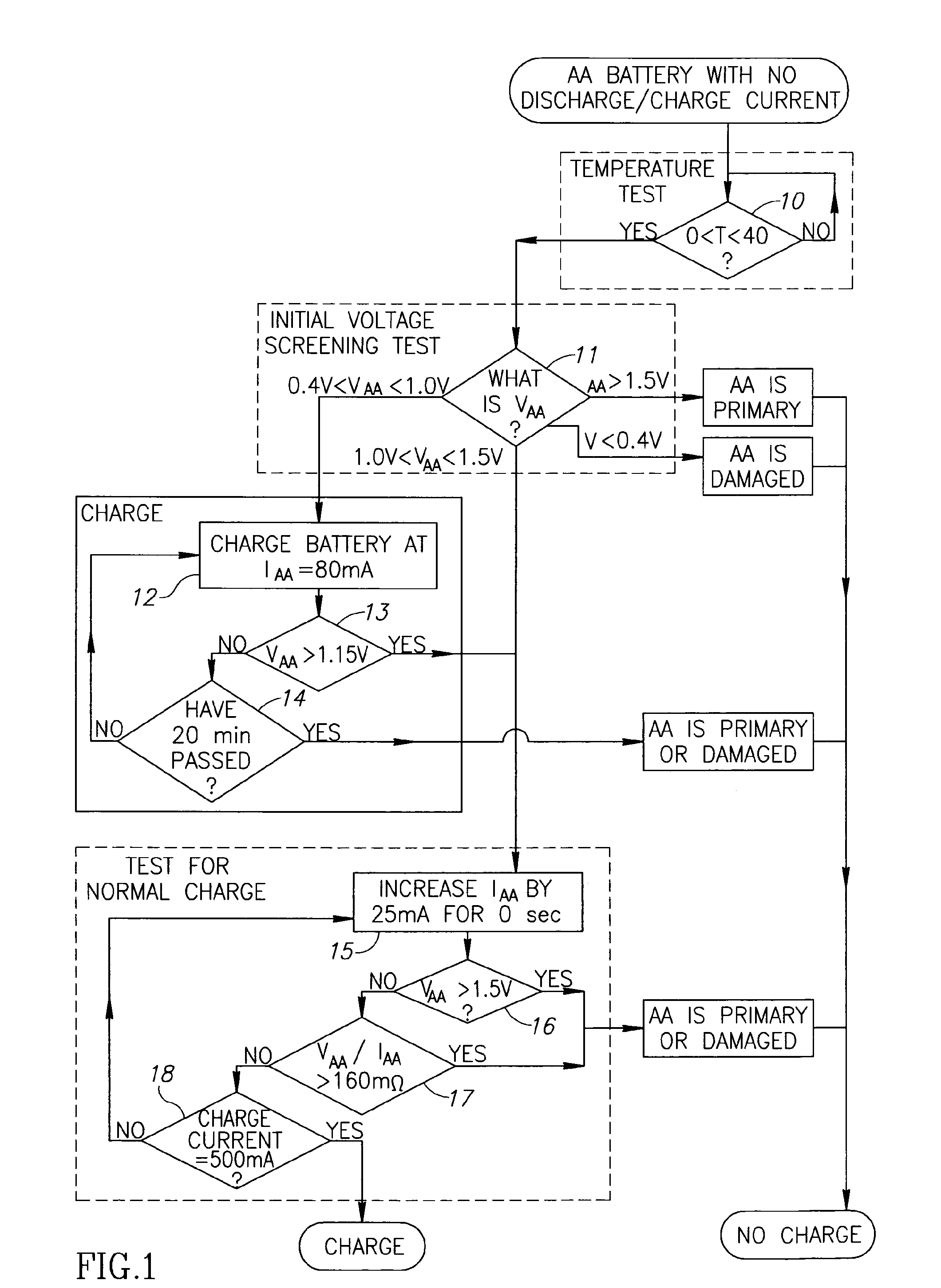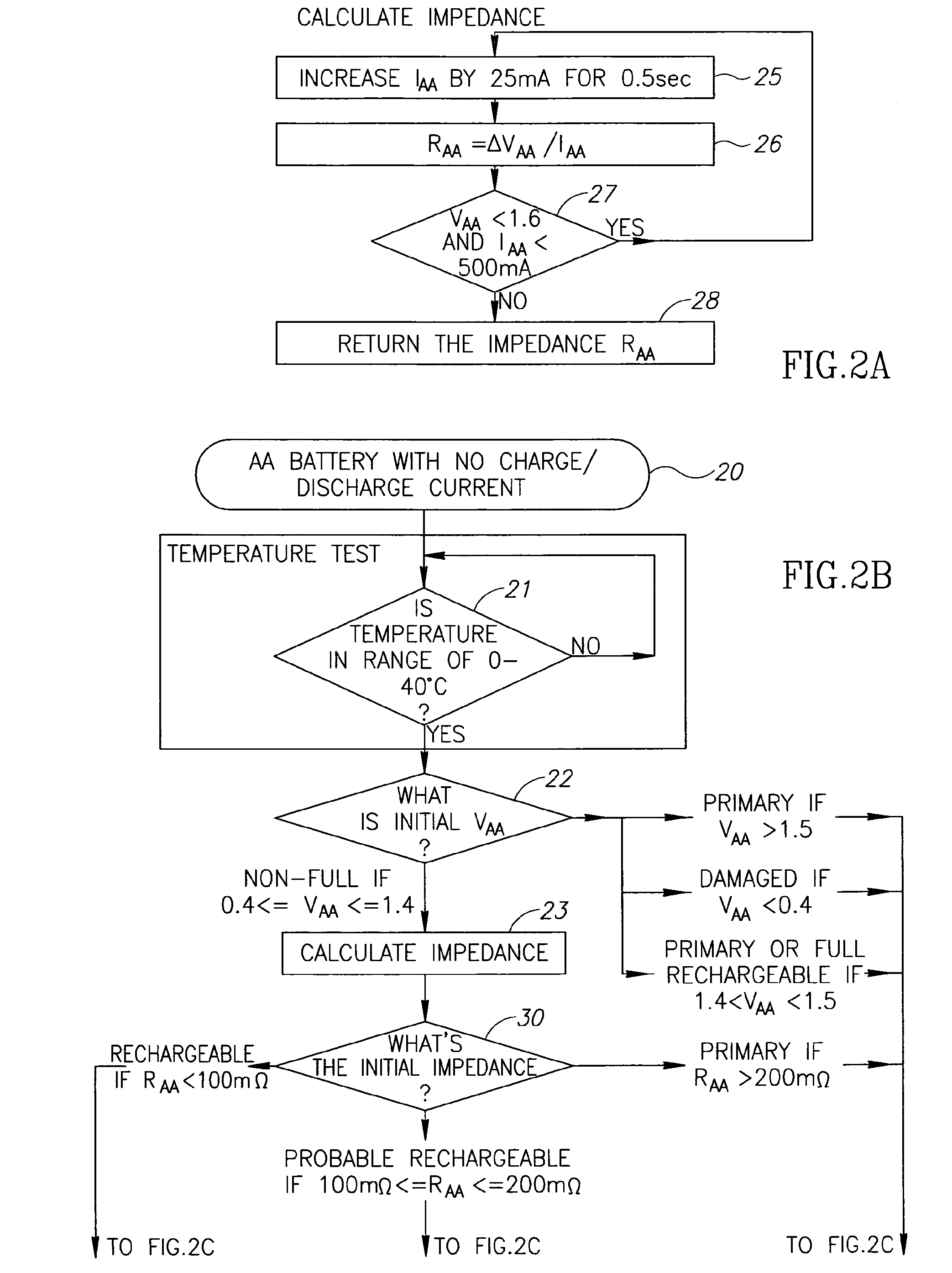Charging methods for battery powered devices
a battery-powered device and charging method technology, applied in the direction of passive battery identification, secondary cell charging/discharging, charge equalisation circuit, etc., can solve the problems of reducing its lifetime and energetic was
- Summary
- Abstract
- Description
- Claims
- Application Information
AI Technical Summary
Benefits of technology
Problems solved by technology
Method used
Image
Examples
Embodiment Construction
[0040]Reference is now made to FIG. 1 and FIGS. 2A-2C, which are flow charts illustrating preferred routines by which the power management charging control system of the present invention operates in determining whether the battery is a primary battery, in which case the charger is prevented from flowing charge current to it, or a secondary cell, in which case it can be recharged. These algorithms are called the battery chemistry algorithms, or battery detection algorithms, and operate in general by measuring the terminal voltage and temperature under certain predetermined charging tests. The algorithm shown in FIG. 1 is a simpler preferred example, and that in FIGS. 2A-2C is an extension to that of FIG. 1, in which there are more possibilities of repeated iterative steps.
[0041]In order to make the flow chart procedures, and in particular, the values thereon, more familiar for common use, all measurement values are given as referred to procedures for use with a single AA-sized cell,...
PUM
| Property | Measurement | Unit |
|---|---|---|
| temperature | aaaaa | aaaaa |
| charge current | aaaaa | aaaaa |
| charge current | aaaaa | aaaaa |
Abstract
Description
Claims
Application Information
 Login to View More
Login to View More - R&D
- Intellectual Property
- Life Sciences
- Materials
- Tech Scout
- Unparalleled Data Quality
- Higher Quality Content
- 60% Fewer Hallucinations
Browse by: Latest US Patents, China's latest patents, Technical Efficacy Thesaurus, Application Domain, Technology Topic, Popular Technical Reports.
© 2025 PatSnap. All rights reserved.Legal|Privacy policy|Modern Slavery Act Transparency Statement|Sitemap|About US| Contact US: help@patsnap.com



